- 10 Best Data Analytics Tools for Big Data Analysis | Everything You Need to Know
- What is Azure Databricks | A Complete Guide with Best Practices
- Elasticsearch Nested Mapping : The Ultimate Guide with Expert’s Top Picks
- Various Talend Products and their Features | Expert’s Top Picks with REAL-TIME Examples
- What is Apache Pig ? : A Definitive Guide | Everything You Need to Know [ OverView ]
- Introduction to HBase and Its Architecture | A Complete Guide For Beginners
- What is Azure Data Lake ? : Expert’s Top Picks | Everything You Need to Know
- What is Splunk Rex : Step-By-Step Process with REAL-TIME Examples
- What is Data Pipelining? : Step-By-Step Process with REAL-TIME Examples
- Dedup : Splunk Documentation | Step-By-Step Process | Expert’s Top Picks
- What Is a Hadoop Cluster? : A Complete Guide with REAL-TIME Examples
- Spark vs MapReduce | Differences and Which Should You Learn? [ OverView ]
- Top Big Data Challenges With Solutions : A Complete Guide with Best Practices
- Hive vs Impala | What to learn and Why? : All you need to know
- What is Apache Zookeeper? | Expert’s Top Picks | Free Guide Tutorial
- What is HDFS? Hadoop Distributed File System | A Complete Guide [ OverView ]
- Who Is a Data Architect? How to Become and a Data Architect? : Job Description and Required Skills
- Kafka vs RabbitMQ | Differences and Which Should You Learn?
- What is Apache Hadoop YARN? Expert’s Top Picks
- How to install Apache Spark on Windows? : Step-By-Step Process
- What is Big Data Analytics ? Step-By-Step Process
- Top Big Data Certifications for 2020
- What is Hive?
- Big Data Engineer Salary
- How Facebook is Using Big Data?
- Top Influencers in Big Data and Analytics in 2020
- How to Become a Big Data Hadoop Architect?
- What Are the Skills Needed to Learn Hadoop?
- How to Become a Big Data Analyst?
- How Big Data Can Help You Do Wonders In Your Business
- Essential Concepts of Big Data and Hadoop
- How Big Data is Transforming Retail Industry?
- How big Is Big Data?
- How to Become a Hadoop Developer?
- Hadoop Vs Apache Spark
- PySpark Programming
- 10 Best Data Analytics Tools for Big Data Analysis | Everything You Need to Know
- What is Azure Databricks | A Complete Guide with Best Practices
- Elasticsearch Nested Mapping : The Ultimate Guide with Expert’s Top Picks
- Various Talend Products and their Features | Expert’s Top Picks with REAL-TIME Examples
- What is Apache Pig ? : A Definitive Guide | Everything You Need to Know [ OverView ]
- Introduction to HBase and Its Architecture | A Complete Guide For Beginners
- What is Azure Data Lake ? : Expert’s Top Picks | Everything You Need to Know
- What is Splunk Rex : Step-By-Step Process with REAL-TIME Examples
- What is Data Pipelining? : Step-By-Step Process with REAL-TIME Examples
- Dedup : Splunk Documentation | Step-By-Step Process | Expert’s Top Picks
- What Is a Hadoop Cluster? : A Complete Guide with REAL-TIME Examples
- Spark vs MapReduce | Differences and Which Should You Learn? [ OverView ]
- Top Big Data Challenges With Solutions : A Complete Guide with Best Practices
- Hive vs Impala | What to learn and Why? : All you need to know
- What is Apache Zookeeper? | Expert’s Top Picks | Free Guide Tutorial
- What is HDFS? Hadoop Distributed File System | A Complete Guide [ OverView ]
- Who Is a Data Architect? How to Become and a Data Architect? : Job Description and Required Skills
- Kafka vs RabbitMQ | Differences and Which Should You Learn?
- What is Apache Hadoop YARN? Expert’s Top Picks
- How to install Apache Spark on Windows? : Step-By-Step Process
- What is Big Data Analytics ? Step-By-Step Process
- Top Big Data Certifications for 2020
- What is Hive?
- Big Data Engineer Salary
- How Facebook is Using Big Data?
- Top Influencers in Big Data and Analytics in 2020
- How to Become a Big Data Hadoop Architect?
- What Are the Skills Needed to Learn Hadoop?
- How to Become a Big Data Analyst?
- How Big Data Can Help You Do Wonders In Your Business
- Essential Concepts of Big Data and Hadoop
- How Big Data is Transforming Retail Industry?
- How big Is Big Data?
- How to Become a Hadoop Developer?
- Hadoop Vs Apache Spark
- PySpark Programming

How Big Data Can Help You Do Wonders In Your Business
Last updated on 02nd Oct 2020, Artciles, Big Data, Blog
Big data is a field that treats ways to analyze, systematically extract information from, or otherwise deal with data sets that are too large or complex to be dealt with by traditional data-processing application software. Data with many cases (rows) offer greater statistical power, while data with higher complexity (more attributes or columns) may lead to a higher false discovery rate. Big data challenges include capturing data, data storage, data analysis, search, sharing, transfer, visualization, querying, updating, information privacy and data source. Big data was originally associated with three key concepts: volume, variety, and velocity. When we handle big data, we may not sample but simply observe and track what happens. Therefore, big data often includes data with sizes that exceed the capacity of traditional software to process within an acceptable time and value.
More and more organizations, both big and small, are leveraging from the benefits provided by big data applications. Businesses find that these benefits can help them grow fast. There are lots of opportunity coming in this area,
we are going to look at some of the famous applications of big data in detail.
Subscribe For Free Demo
Error: Contact form not found.
Big Data in Education Industry
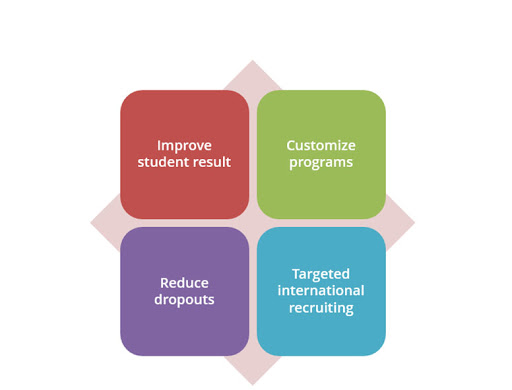
Education industry is flooded with huge amounts of data related to students, faculty, courses, results, and whatnot. Now, we have realized that proper study and analysis of this data can provide insights which can be used to improve the operational effectiveness and working of educational institutes.
Following are some of the fields in the education industry that have been transformed by big data-motivated changes:
- Customized and Dynamic Learning Programs
Customized programs and schemes to benefit individual students can be created using the data collected on the bases of each student’s learning history. This improves the overall student results.
- Reframing Course Material
Reframing the course material according to the data that is collected on the basis of what a student learns and to what extent by real-time monitoring of the components of a course is beneficial for the students.
- Grading Systems
New advancements in grading systems have been introduced as a result of a proper analysis of student data.
- Career Prediction
Appropriate analysis and study of every student’s records will help understand each student’s progress, strengths, weaknesses, interests, and more. It would also help in determining which career would be the most suitable for the student in future.
The applications of big data have provided a solution to one of the biggest pitfalls in the education system, that is, the one-size-fits-all fashion of academic set-up, by contributing in e-learning solutions.
Example
The University of Alabama has more than 38,000 students and an ocean of data. In the past when there were no real solutions to analyze that much data, some of them seemed useless. Now, administrators are able to use analytics and data visualizations for this data to draw out patterns of students revolutionizing the university’s operations, recruitment, and retention efforts.
Big Data in Healthcare Industry
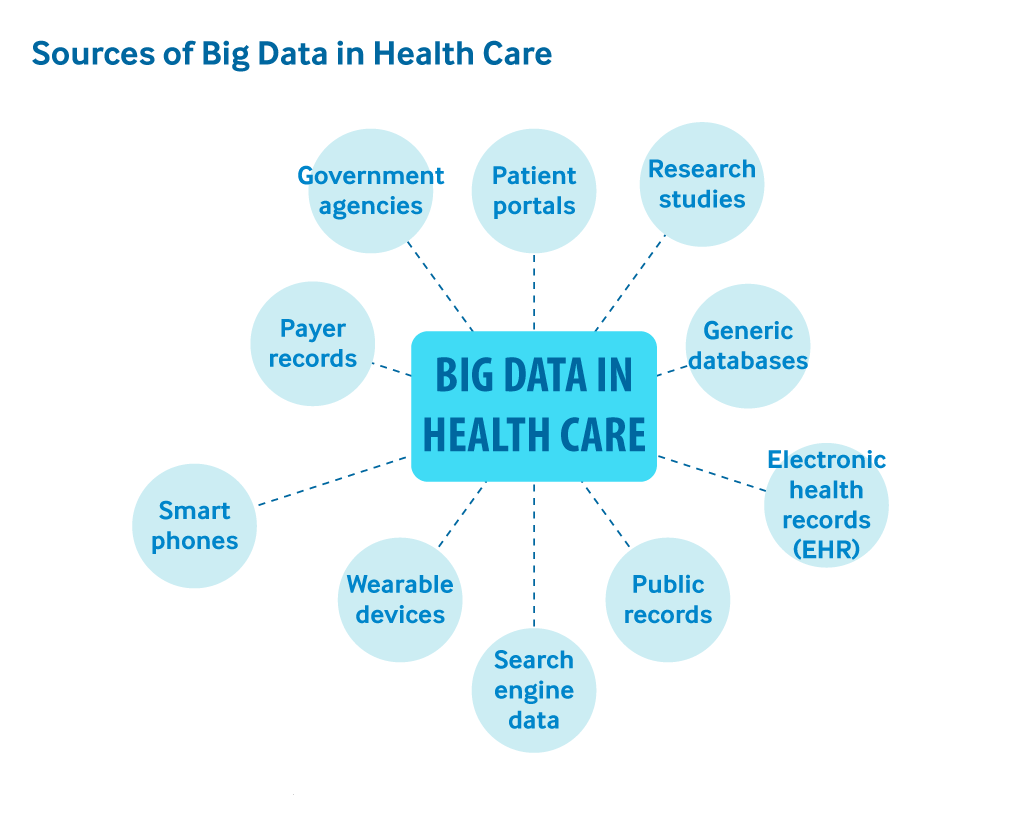
Healthcare is yet another industry which is bound to generate a huge amount of data. Following are some of the ways in which big data has contributed to healthcare:
- Big data reduces costs of treatment since there are less chances of having to perform unnecessary diagnosis.
- It helps in predicting outbreaks of epidemics and also in deciding what preventive measures could be taken to minimize the effects of the same.
- It helps avoid preventable diseases by detecting them in early stages. It prevents them from getting any worse which in turn makes their treatment easy and effective.
- Patients can be provided with evidence-based medicine which is identified and prescribed after doing research on past medical results.
Example
Wearable devices and sensors have been introduced in the healthcare industry which can provide real-time feed to the electronic health record of a patient. One such technology is from Apple.
Apple has come up with Apple HealthKit, CareKit, and ResearchKit. The main goal is to empower the iPhone users to store and access their real-time health records on their phones.
Big Data in Government Sector

Governments, be it of any country, come face to face with a very huge amount of data on an almost daily basis. The reason for this is, they have to keep track of various records and databases regarding their citizens, their growth, energy resources, geographical surveys, and many more. All this data contributes to big data. The proper study and analysis of this data, hence, helps governments in endless ways. Few of them are as follows:
Welfare Schemes
- In making faster and informed decisions regarding various political programs
- To identify areas that are in immediate need of attention
- To stay up to date in the field of agriculture by keeping track of all existing land and livestock.
- To overcome national challenges such as unemployment, terrorism, energy resources exploration, and much more.
Cyber Security
- Big Data is hugely used for deceit recognition.
- It is also used in catching tax evaders.
Example
Food and Drug Administration (FDA) which runs under the jurisdiction of the Federal Government of USA leverages from the analysis of big data to discover patterns and associations in order to identify and examine the expected or unexpected occurrences of food-based infections.
Big Data in Media and Entertainment Industry
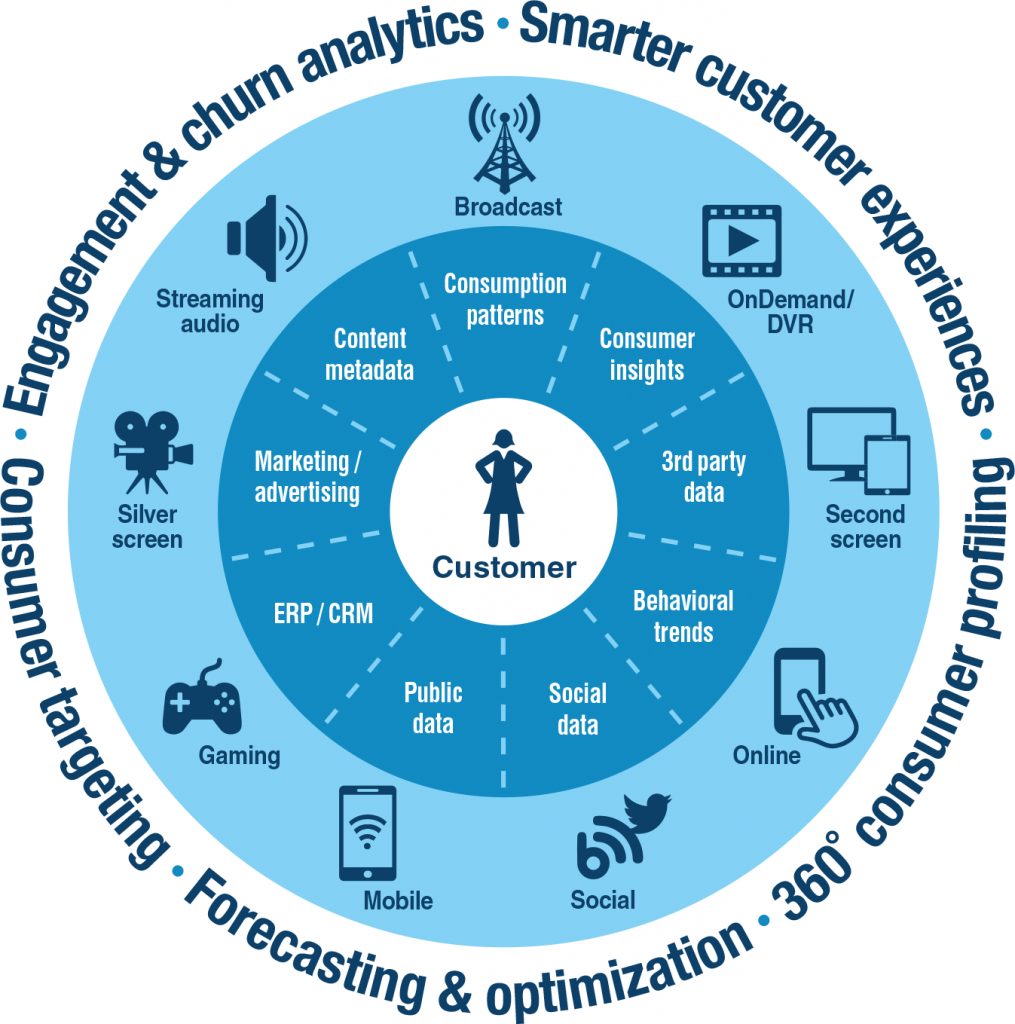
With people having access to various digital gadgets, generation of large amounts of data is inevitable and this is the main cause of the rise in big data in the media and entertainment industry.
Other than this, social media platforms are another way in which a huge amount of data is being generated. Although, businesses in the media and entertainment industry have realized the importance of this data, and they have been able to benefit from it for their growth.
Some of the benefits extracted from big data in the media and entertainment industry are given below:
- Predicting the interests of audiences
- Optimized or on-demand scheduling of media streams in digital media distribution platforms
- Getting insights from customer reviews
- Effective targeting of the advertisements
- Example
Spotify, an on-demand music providing platform, uses Big Data Analytics, collects data from all its users around the globe, and then uses the analyzed data to give informed music recommendations and suggestions to every individual user.
Amazon Prime that offers videos, music, and Kindle books in a one-stop shop is also big on using big data.
Big Data in Weather Patterns
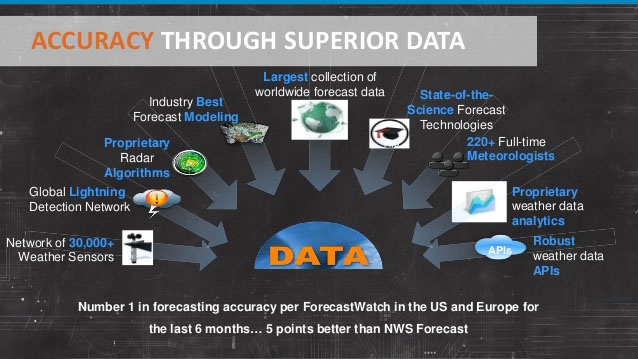
There are weather sensors and satellites deployed all around the globe. A huge amount of data is collected from them, and then this data is used to monitor the weather and environmental conditions.
All of the data collected from these sensors and satellites contribute to big data and can be used in different ways such as:
- In weather forecasting
- To study global warming
- In understanding the patterns of natural disasters
- To make necessary preparations in the case of crises
- To predict the availability of usable water around the world
- Example
IBM Deep Thunder, which is a research project by IBM, provides weather forecasting through high-performance computing of big data. IBM is also assisting Tokyo with the improved weather forecasting for natural disasters or predicting the probability of damaged power lines.
Big Data in Transportation Industry
Since the rise of big data, it has been used in various ways to make transportation more efficient and easy. Following are some of the areas where big data contributes to transportation.
- Route planning: Big data can be used to understand and estimate users’ needs on different routes and on multiple modes of transportation and then utilize route planning to reduce their wait time.
- Congestion management and traffic control: Using big data, real-time estimation of congestion and traffic patterns is now possible. For example, people are using Google Maps to locate the least traffic-prone routes.
- Safety level of traffic: Using the real-time processing of big data and predictive analysis to identify accident-prone areas can help reduce accidents and increase the safety level of traffic.
Example
Let’s take Uber as an example here. Uber generates and uses a huge amount of data regarding drivers, their vehicles, locations, every trip from every vehicle, etc. All this data is analyzed and then used to predict supply, demand, location of drivers, and fares that will be set for every trip.
And guess what? We too make use of this application when we choose a route to save fuel and time, based on our knowledge of having taken that particular route sometime in the past. In this case, we analyzed and made use of the data that we had previously acquired on account of our experience, and then we used it to make a smart decision. It’s pretty cool that big data has played parts not only in big fields but also in our smallest day-to-day life decisions too.
Big Data in Banking Sector
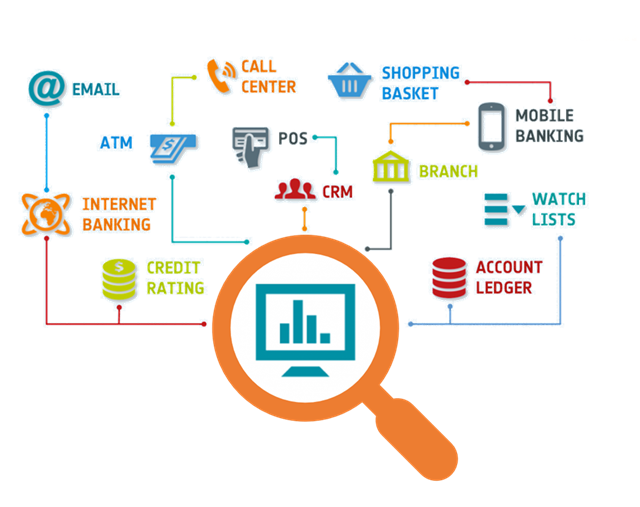
The amount of data in the banking sector is skyrocketing every second. According to GDC prognosis, this data is estimated to grow 700 percent by the end of the next year. Proper study and analysis of this data can help detect any and all illegal activities that are being carried out such as:
- Misuse of credit/debit cards
- Venture credit hazard treatment
- Business clarity
- Customer statistics alteration
- Money laundering
- Risk mitigation
Example
Various anti-money laundering software such as SAS AML use Data Analytics in Banking for the purpose of detecting suspicious transactions and analyzing customer data. Bank of America has been a SAS AML customer for more than 25 years.
Conclusion
We have seen some of the applications of big data in the real world. No wonder, there is so much hype for big data, given all of its applications. The importance of big data lies in how an organization is using the collected data and not in how much data they have been able to collect. There are Big Data solutions that make the analysis of big data easy and efficient. These Big Data solutions are used to gain benefits from the heaping amounts of data in almost all industry verticals.
